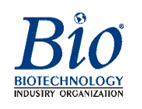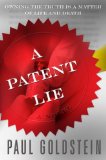Earlier, Dr. Triantafyllos Tafas’ lawsuit, arguing that the proposed U.S. Patent Office continuation rules are void for exceeding its authority, won a permanent injunction prohibiting the USPTO from putting the new rules changes into effect (Final Rules; 72 Federal Register 161 at 46716). Tafas v. Dudas and the United States Patent and Trademark Office.
Dr. Tafas had complained that the USPTO exceeded its Congressionally-delegated rulemaking authority and that the new rule changes specifically violate the Patent Act. He was joined by SmithKline Beecham Corp., SmithKline Beecham plc, and Glaxo Group Ltd. (GSK) in claiming that the Final Rules, which change the patent system by modifying several long-established rules governing patent examination by the USPTO, are unlawful agency action under Section 706(2) of the Administrative Procedure Act (APA).
The District Court found that the Final Rules were substantive in nature and exceed the scope of the USPTO’s rulemaking authority under 35 U.S.C. § 2(b)(2). Consequently, the Court granted summary judgment to GSK and Tafas and voided the Final Rules as otherwise not in accordance with law and in excess of statutory jurisdiction and authority.
The USPTO filed its appeal brief with the US Court of Appeals for the Federal Circuit asking the Court to consider the following questions:
- Whether the USPTO’s revised rules of practice for patent cases are within the scope of the Office’s statutory rulemaking authority.
- Whether the revised rules conflict with the Patent Act.
- Whether the USPTO must provide public notice and comment for rules that are not subject to notice and comment under the Administrative Procedure Act.
Showing that the Patent Office sees applicants as the source of all their problems, they claim that:
[U]nlimited recourse to continuation applications and RCEs has led to misuse and abuse. Some applicants “rely on an unlimited number of continued examination filings to correct deficiencies in the claims and disclosure” that could have been avoided by greater diligence and care in the preparation of the initial applications.
The Office’s arguments for authority come down to:
- The Final Rules are within the scope of the USPTO’s rulemaking authority under the Patent Act. The Act’s primary grant of rulemaking authority, Section 2(b)(2), authorizes the Office to issue rules that “govern the conduct of proceedings in the Office,” “facilitate and expedite the processing of patent applications,” and “govern the recognition and conduct of agents, attorneys, or other persons representing applicants or other parties before the Office.”
- In the course of its ultra vires analysis, the district court held that the Final Rules are inconsistent with other provisions of the Patent Act. That holding is likewise incorrect. The court mischaracterized the effects of the Final Rules, misconstrued the statutory provisions, misunderstood the judicial precedents concerning those provisions, and failed to give the USPTO’s construction of the provisions the deference required by Chevron.
Now, both GSK and Tafas have filed their reply briefs in response to the USPTO’s filing. Their argument is as follows:
Article 1, Section 8 of the U.S. Constitution gives Congress the power to establish laws governing the United States patent system. Congress has considered vesting the PTO with substantive rulemaking power, but has chosen not to do so. Congress has to date given the PTO only limited rulemaking authority to govern the conduct of proceedings in the Office.
Instead, Congress created this Court and vested it with the power to interpret the patent laws. In carrying out that duty, this Court has dispelled any doubt regarding the PTO’s limited rulemaking authority, holding that the PTO’s broadest powers do not include substantive rulemaking. See Merck & Co. v. Kessler, 80 F.3d 1543 (Fed. Cir. 1996). This case arises out of the PTO’s decision to spurn these limits; ignore the Constitution, Congress, and this Court; and promulgate the substantive Final Rules that violate well-established patent law and fundamentally alter patent practice.
The Final Rules do that by, among other things, limiting the number of continuing applications, requests for continued examination (RCEs), and claims that an applicant may file. In issuing these rules, the PTO makes an unprecedented and unlawful grab for power that threatens both incentives to innovate as well as the authority of this Court, the Supreme Court, and Congress. Indeed, by enacting the Final Rules, the PTO attempts to grant itself the authority to do exactly what this Court and its predecessor court have repeatedly told the PTO it lacks the power to do.
While the USPTO claims to have been given broad powers owing to a broad Chevron deference. The PTO contends that the district court should have deferred to the PTO’s views — even in the face of contrary precedent from this Court — that the Final Rules: (i) fall within the PTO’s delegated authority; and (ii) constitute a lawful use of that authority. GSK argued that this is BS for the following reasons:
First, the scope of the PTO’s rulemaking authority is a threshold legal question for which no deference is owed. See Borlem S.A.-Empreedimentos Industriais v. United States, 913 F.2d 933, 937 (Fed. Cir. 1990). As the Supreme Court has explained, “[a] precondition to deference under Chevron is a congressional delegation of administrative authority.” Adams Fruit Co. v. Barrett, 494 U.S. 638, 649 (1990) (emphasis added). It is the role of the courts, not the PTO, to assess the scope of the PTO’s delegated authority. Indeed, it would be ill-advised to defer to the PTO’s self-interested views on the reach of its own power.
Second, the Final Rules are due no deference because they are substantive, and this Court conclusively held in Merck that the PTO lacks substantive rulemaking authority. Merck, 80 F.3d at 1549-50. Several recent decisions of this Court have reiterated Merck’s holding. See, e.g., Cooper Techs. Co. v. Dudas, 536 F.3d 1330, 1336 (Fed. Cir. 2008). The Final Rules are substantive because they “constitute a drastic departure from the terms of the Patent Act” and “effect changes in GSK’s . . . existing rights and obligations.” Tafas/GSK II at 814. Thus, the Final Rules exceed the PTO’s limited authority and are not entitled to any deference.
Third, the Final Rules cannot be given deference because they contradict the patent laws and precedent of this Court and its predecessor. See 35 U.S.C. § 2(b)(2) (stating that the PTO “may establish regulations, not inconsistent with law”). Final Rules 75, 78, 114, and 265 impose arbitrary and mechanical limits on the number of continuing applications, RCEs, and claims that applicants may file. These restrictions contradict Sections 112, 120, and 132 of the Patent Act, as well as the authoritative constructions of those sections, which establish that applicants have the right to file as many good-faith continuing applications, RCEs, and claims as they deem necessary.
Not content to leave it at that, GSK goes on to state that the Final Rules are also flawed on two other grounds:
First, the ESD’s preexamination search requirement is unconstitutionally vague. It fails to provide fair notice as to how to comply and expressly requires applicants to search the entire world for prior art without regard to scope, time, or cost.
Second, the Final Rules apply retroactively to pending applications in an impermissible manner. They impose “new duties” on completed transactions (previously filed patent applications) and “impair rights a party possessed when he acted” (the right to fully protect an invention in exchange for relinquishing a trade secret). See Landgraf v. USI Film Prods., 511 U.S. 244, 280 (1994).
Note that the Tafas brief cites Donald Zuhn’s coverage of the BIO conference panel discussion on the impact of pending USPTO rules changes and possible patent reform legislation.
Read the entire briefs here:
Tafas Reply Brief
GSK Reply Brief
IPO Amicus Brief
More here:
No Joke, Court Smacks Down New Patent Rules
Patent Rule Injunction, Court To Sleep On It
Examination Support Document (ESD) Could Add $26,000 to Patent Costs
Is the Public Interest Really Upheld by the New USPTO Rules?
Court Blocks New USPTO Rules on Continuations and Claims — For Now
Patent Wars Episode II: GSK Strikes Back

 BIO’s Intellectual Property Counsel Committee is holding its Fall Conference and Committee Meeting on Oct. 20-22, 2008, at the Hard Rock Hotel at Universal Orlando, Orlando, Florida.
BIO’s Intellectual Property Counsel Committee is holding its Fall Conference and Committee Meeting on Oct. 20-22, 2008, at the Hard Rock Hotel at Universal Orlando, Orlando, Florida.

 The Starbucks Coffee Company has apparently
The Starbucks Coffee Company has apparently